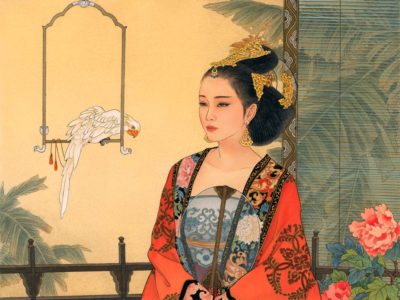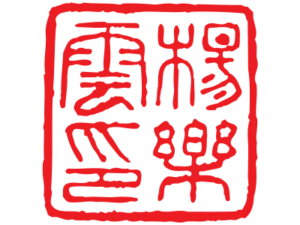Caroline Young, artwork and text
QFWF, March 24th 2020

King Songzan Ganbu of Tibet (569–649?) was a truly brave and handsome monarch.
He had been searching high and low for the woman who would complete his kingdom when he was shown the portrait of Princess Wencheng (620s-680 or 682), daughter of Tang emperor Taizong of Songzhou.
He fell hopelessly in love with her unrivaled beauty and her dignified air of effortless elegance.
He sent a marriage proposal, but his hopes were soon dashed.
He was undermined by the malicious and slanderous rumors spread by Tu Guhun, the Turkish king. However, Songzan Ganbu was determined to have the princess as his bride, and he quickly retaliated by sending his troops to attack Tu Guhun in Turkey.
Having routed the Turks, he then turned his fury on the Chinese territory of Songzhou. Emperor Taizong soon realized that the Tibetan king was not fighting for control of Songzhou, but for the hand of Princess Wen Cheng.
The emperor was impressed with the Tibetan king’s dogged determination and subsequently, he accepted the proposal and betrothed the princess to Songzan Ganbu.
In 642, Princess Wencheng embarked on the long journey to her new home.
Overjoyed, the King of Tibet built a magnificent palace for her and he wore the costume of the Tang court.
As she was a Buddhist, he had two temples built for her. Because she loved willow trees, he had them planted all over. Finally, he established a system of “rest stops” at one hundred mile intervals, so special messengers could carry letters and gifts to and from the Tang court.
The princess was touched by her husband’s love for her, and soon came to love him with all her heart. Under Songzan Ganbu’s reign, Tibet became one of China’s most loyal tributary states.
Wencheng is popularly known in Tibet as Gyasa, or “Chinese wife”. Much of her life has been mythified and used for propaganda purposes.
Chinese sources since the Tang dynasty credit her with introducing Chinese culture to Tibet, whereas Tibetan sources credit her, along with Songzan Ganbu’s Nepalese wife, with introducing Buddhism to Tibet. Traditional Tibetan histories consider both ladies as physical manifestations of the bodhisattva Tara.[1]
[1] Source: Princess Wencheng






